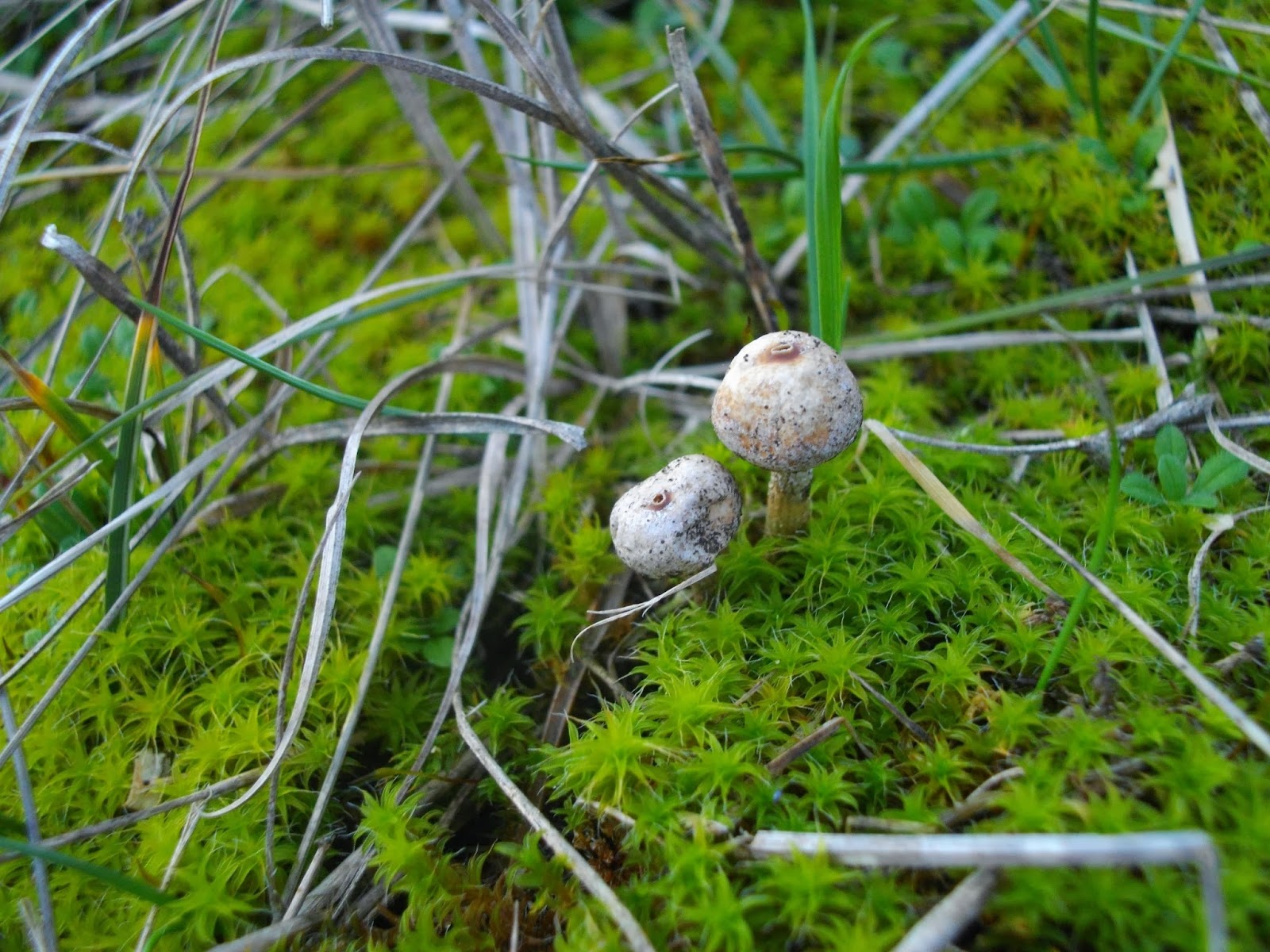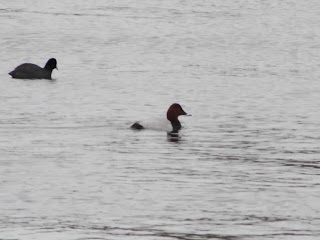Later this month is my 30th birthday, and I had been wondering what sort of wildlife-related activity would be an appropriate celebration. January isn't a great month for going out, with the short hours of daylight and lack of plant and insect life, so I decided to indulge in a year-long search for 30 interesting species.
Picking the species was trickier than I thought. I wanted it to be a mixture of all of the different groups that I'm interested in, but I had to take into account time constraints amongst other things. Anyway, my provisional list is below. Some species I should be able to see without any problems, some will take a bit of research, whilst others may require local knowledge or specialist group help. Will I see all 30? Probably not, but hopefully it will be fun trying!
Birds
1.
Colour-headed Yellow Wagtails - I haven't seen any of the scarcer ones, and even the hybrids are interesting birds. Hopefully there should be some in late April in the Eye field or east coast paddocks.
2.
White-winged Black Tern - I'm yet to see one in Norfolk yet, and a possible Whitlingham bird too, either in May or August.
3.
Long-tailed Skua - Some sea-watching time will be needed for this one...
4.
Pallas' Warbler - I still haven't seen one of these yet.
Mammals
5.
Natterer's Bat - I had a probable at Whitlingham a couple of years ago, it would be nice to confirm it though -
Seen, Trowse Hibernaculum with Norwich Bat Group
6.
Barbastelle Bat - A species I haven't seen yet but present in NE Norfolk.
Dipped
7.
Bottle-nosed Dolphin - I haven't seen any dolphins before, we have a trip to see them in Wales booked for the spring -
Seen, New Quay, Wales with Carl Chapman
8.
Yellow-necked Mouse - A scarce species in Norfolk, but one of the sites with them usually has a small-mammal trapping day each year.
Amphibians
-- I would like to see Natterjack, but I don't really fancy wandering about the dunes at night. I am also interested in trying to see Marsh Frog in Norfolk - I know there used to be several colonies including one in the Tas Valley, but the most up-to-date information I can find on these is from the 1980s. Does anyone know of any Marsh Frog sites in Norfolk with public access?
Dragonflies
Having seen all of the usual Norfolk dragonflies the closest lifer for me would be White-legged Damselfly. However I would like to get some decent photos of Willow Emerald.
9.
Willow Emerald -
Get some decent photos. Photographed at Strumpshaw 24/08/14.
Butterflies
Like Dragonflies I have seen the regular Norfolk ones - the closest lifer for me is Marbled White, which should be a reasonable trip.
10.
Marbled White - Devil's Dyke.
11.
White Admiral - One of my favourite butterflies but one I've never managed to get a photograph of. Fingers crossed this should be simple at Holt C.P.
Photographed at Holt CP.
Moths
12.
Hornet Moth - I haven't seen any of the Hornet or Clearwing moths - I hope to see one of these at the North Norfolk coast.
13.
Scorched Wing Moth - There are loads of fairly common moths I haven't seen, but this seems a reasonable one to look for.
14.
Merveille de Jour - I've wanted to see one of these for ages. We don't seem to get them near the garden I trap in, but Justin has kindly offered to let me know when he catches one this autumn.
Orthoptera
15.
Great Green Bush Cricket - I have looked for these before and although we heard them, we didn't see any.
Seen at Reedham, 24/08/14.
Orchids
16.
Frog Orchid - I meant to look for these last year at their known Suffolk site.
17.
Lizard Orchid - Hopefully I can see these whilst looking for Marbled Whites.
18.
Pale or white form of another Orchid - There are lots, the alba form of Green-winged Orchid would be nice to see.
19.
Common Fragrant Orchid - this has fairly recently been promoted to full species, and the NNNS orchid guide says that it occurs in Norfolk, but I haven't been able to find any sites yet.
Updated advise is that this species may have occurred in Norfolk previously, but no current sites.
Flowering plants
There are loads of flowering plants in Norfolk that I'd like to see, including the Bladderworts and Yellow Bird's-nest, however I settled on:
20.
Spiked Speedwell - or any of the specialist Breckland Speedwells, it's a place I haven't seen many plants.
21.
Purple Broomrape - Common in several places along the North Norfolk coast - I failed to find it at Overstrand a few years ago.
22.
Chaffweed - Only found at one site in Norfolk. The good news is that it is near Norwich, but the bad news is that the site is threatened with development. You can out more here:
http://friendsofthorpewoodlands.blogspot.co.uk/. Unfortunately Chaffweed is a small green plant, so finding it in a large woods may be tricky.
23.
Small-flowered Catchfly - A rare Red Campion-like plant that grows in several places around the county.
Seen, Strumpshaw area.
24.
Maiden Pink - Another Breckland species I'd like to see.
Ferns
25.
Hard Shield Fern - scarce in Norfolk so I need to find some good places to look.
Seen, Whitlingham Woods (thanks to Jeremy Halls)
26.
Narrow Buckler Fern - fairly common but a fern lifer, so provided I can identify it then it could be something to pick whilst hunting for the other species.
Fungi
27.
Scaly or Winter Stalkball - Scarce stalked puffball species. Either would be great, but as they often occur at the same sites I may even luck in on both.
Winter Stalkball seen at Holme (thanks to Rob Smith)
28.
A scarce bracket fungus. There are quite a few possibles here, I haven't seen Hoof Fungus,
Phellinus hippophaeicola (grows on Sea Buckthorn) or
Ganoderma resinaceum for starters...
Gloeophyllum abeitinum (a 1st for Norfolk) seen at Whitlingham (thanks to Tony Leech).
29.
Any Earthstar except G. triplex - Again lots to choose from. Beaked Earthstar is the best bet as it sometimes grows in Earlham Cemetery, although there weren't any fruiting bodies in 2013.
30.
Parrot Waxcap - A fairly common Waxcap, present at Earlham Cemetery although I spectacularly failed to find it on multiple occasions in 2013.
So there we have it, my 30 to look for. Hopefully looking for these will provide some interesting blog entries, and if you can recommend any sites for some of the trickier species then please get in touch.











